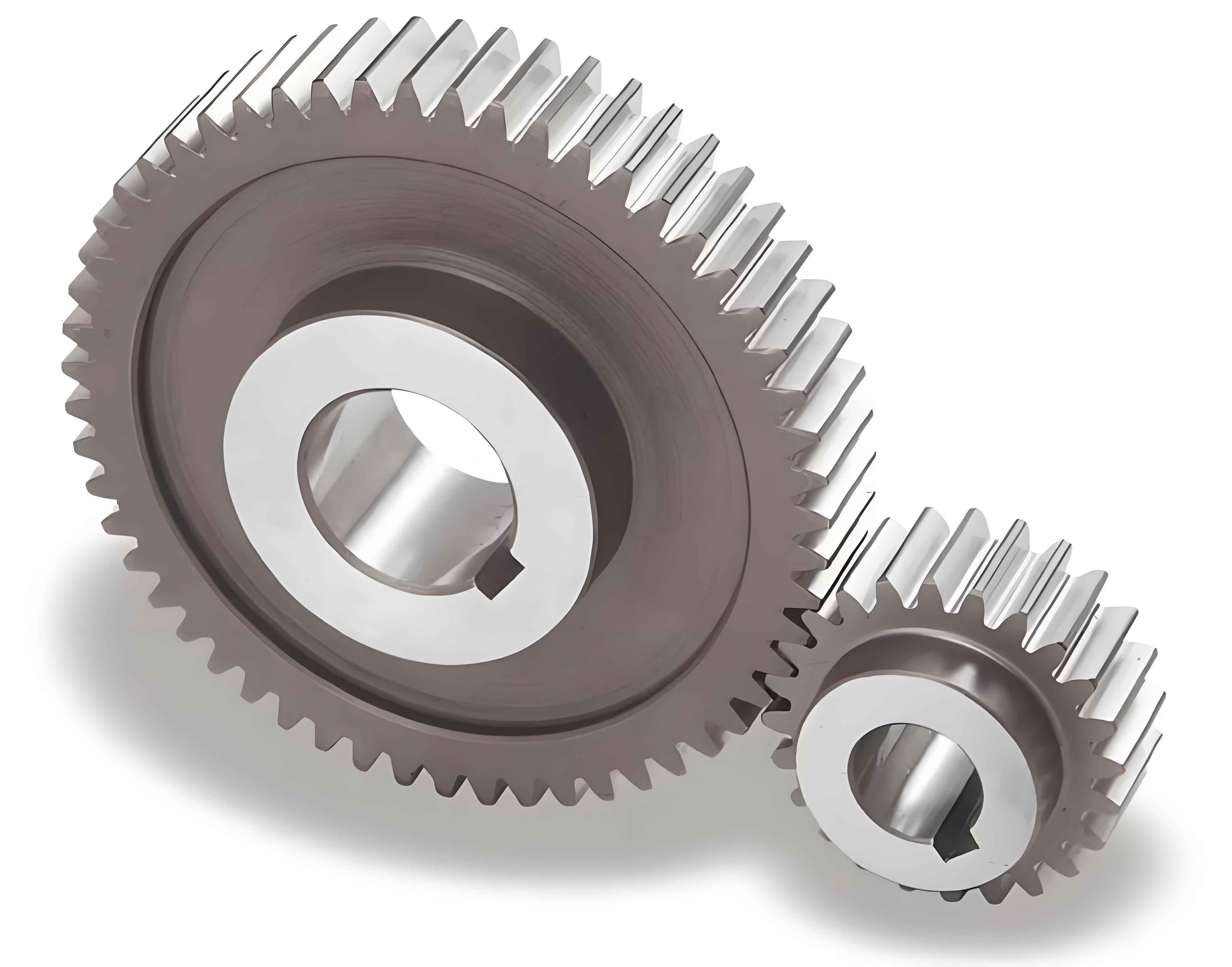
Introduction
Spur gear is widely used in various mechanical systems due to their simplicity and efficiency in power transmission. However, one of the challenges associated with spur gear is the noise they generate during operation. This noise can lead to discomfort, reduced performance, and even damage to the gear system over time. Innovations in noise reduction strategies have become crucial for improving the performance and longevity of spur gear systems. This article explores various noise reduction strategies, their innovations, and practical applications in modern machinery.
Sources of Noise in Spur Gear
Noise in spur gear is primarily generated due to the interaction between the gear teeth during meshing. The main sources of noise include:
- Tooth Contact: The impact and sliding contact between gear teeth.
- Transmission Error: Deviations from the ideal gear tooth motion.
- Dynamic Forces: Vibrations caused by unbalanced forces within the gear system.
- Surface Roughness: Irregularities on the gear tooth surfaces.
Noise Reduction Strategies
1. Gear Design Optimization
Optimizing the design of spur gear can significantly reduce noise by minimizing transmission errors and improving load distribution.
Techniques
- Profile Modification: Altering the tooth profile to reduce contact stresses and transmission errors.
- Helical Gear: Using helical gear instead of spur gear to achieve smoother and quieter operation.
Table 1: Gear Design Optimization Techniques
| Technique | Description | Benefits |
|---|---|---|
| Profile Modification | Altering tooth profile for better load distribution | Reduced contact stress, lower noise levels |
| Helical Gear | Using helical gear for smoother meshing | Smoother operation, reduced noise |
2. Material Selection and Surface Treatments
Selecting appropriate materials and applying surface treatments can enhance the damping properties of spur gear and reduce noise.
Techniques
- Composite Materials: Using materials with better damping properties than traditional metals.
- Surface Coatings: Applying coatings to reduce friction and wear, thereby reducing noise.
Table 2: Material and Surface Treatment Techniques
| Technique | Description | Benefits |
|---|---|---|
| Composite Materials | Using materials with high damping properties | Improved noise reduction, enhanced durability |
| Surface Coatings | Applying coatings to reduce friction and wear | Lower friction, reduced noise |
3. Lubrication Strategies
Proper lubrication can reduce noise by minimizing friction and wear between spur gear teeth.
Techniques
- High-Performance Lubricants: Using lubricants specifically designed to reduce noise.
- Automatic Lubrication Systems: Implementing systems that ensure optimal lubrication levels at all times.
Table 3: Lubrication Strategies
| Technique | Description | Benefits |
|---|---|---|
| High-Performance Lubricants | Using lubricants designed for noise reduction | Lower friction, reduced wear, quieter operation |
| Automatic Lubrication Systems | Ensuring optimal lubrication levels | Consistent lubrication, reduced maintenance |
4. Advanced Manufacturing Techniques
Utilizing advanced manufacturing techniques can improve the precision and surface finish of spur gear, leading to lower noise levels.
Techniques
- Precision Machining: Achieving high accuracy in spur gear tooth geometry.
- Additive Manufacturing: Producing complex spur gear shapes with minimal surface roughness.
Table 4: Advanced Manufacturing Techniques
| Technique | Description | Benefits |
|---|---|---|
| Precision Machining | Achieving high accuracy in gear geometry | Better meshing, reduced noise |
| Additive Manufacturing | Producing complex shapes with minimal roughness | Enhanced design flexibility, lower noise |
Applications of Noise Reduction Strategies
1. Automotive Industry
In the automotive industry, noise reduction in spur gear is crucial for improving passenger comfort and vehicle performance.
Example
- Transmission Systems: Using helical gear and high-performance lubricants to minimize noise in car transmissions.
2. Industrial Machinery
In industrial settings, reducing spur gear noise can enhance the efficiency and lifespan of machinery.
Example
- Heavy Equipment: Implementing automatic lubrication systems and precision machining to ensure quieter operation of heavy machinery.
3. Consumer Electronics
In consumer electronics, minimizing noise is essential for enhancing user experience and product quality.
Example
- Home Appliances: Using composite materials and surface coatings in spur gear for quieter operation of appliances like washing machines and blenders.
Table 5: Applications of Noise Reduction Strategies
| Industry | Application | Noise Reduction Techniques |
|---|---|---|
| Automotive | Transmission systems | Helical gear, high-performance lubricants |
| Industrial Machinery | Heavy equipment | Automatic lubrication, precision machining |
| Consumer Electronics | Home appliances | Composite materials, surface coatings |
Innovations in Noise Reduction
1. Smart Lubrication Systems
Smart lubrication systems utilize sensors and IoT technology to monitor and adjust lubrication levels in real-time, ensuring optimal performance and noise reduction.
2. AI-Based Design Optimization
Artificial Intelligence (AI) is being used to optimize spur gear design by simulating various configurations and selecting the one with the lowest noise output.
3. Nano-Coatings
The development of nano-coatings offers superior friction reduction and wear resistance, leading to quieter spur gear operation.
Table 6: Innovations in Noise Reduction
| Innovation | Description | Benefits |
|---|---|---|
| Smart Lubrication Systems | Real-time monitoring and adjustment of lubrication | Optimal performance, reduced maintenance |
| AI-Based Design Optimization | Simulating and optimizing gear design using AI | Lower noise output, enhanced design efficiency |
| Nano-Coatings | Superior friction reduction and wear resistance | Quieter operation, extended gear life |
Conclusion
Reducing noise in spur gear is essential for improving the performance, durability, and user experience of various mechanical systems. By employing strategies such as gear design optimization, material selection, advanced lubrication, and precision manufacturing, engineers can effectively minimize noise levels. Innovations like smart lubrication systems, AI-based design optimization, and nano-coatings further enhance these efforts, paving the way for quieter and more efficient gear systems. Understanding and implementing these noise reduction strategies can lead to significant improvements in the operation and longevity of spur gear across multiple industries.
